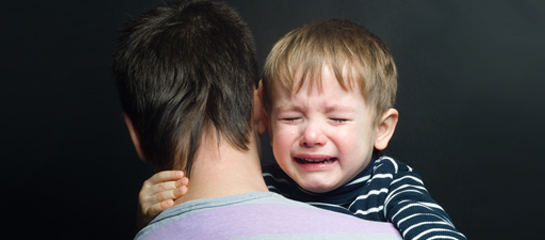by Tamarin Epstein, Educational Psychologist
“Separation Anxiety” refers to an abnormally high fear response to real/imagined separation from home or a major attachment figure (usually a parent/caregiver). In babies under 2 years, it is a normal survival response. It is normal in children first starting school. But otherwise, in children 6 years or older, it is developmentally inappropriate, and considered a disorder.
A child with Separation Anxiety Disorder (SAD) experiences persistent, excessive fear and distress, in situations where separation is anticipated or occurring. They may refuse to be alone, and fear that something bad will happen to them, or the person they love. They may have sleeping difficulties (not wanting to sleep alone, fears of the dark or imagined fears like “monsters”, trouble falling asleep, and nightmares). They may get up in the night to find the parent or climb into their bed. They may become withdrawn, bedwet, throw tantrums, and even be physically aggressive. They often feel ill and complain of a head/stomach ache, sore throat, nausea, dizziness or body pains. They may tremble or vomit. In most cases, they refuse to go to school.
When anticipating a separation, the child may look sad, cry easily and sit alone, or may become whiny, clingy, irritable and demanding. Symptoms in adolescents may be more subtle. SAD can also be diagnosed in adults. Symptoms in adults include over-attachment to a loved one (usually a partner, friend or child).
SAD is the most common childhood disorder in the US. Studies in SA indicate that our children suffer from higher levels of anxiety, so it is possible that SAD is even more prevalent in our country. Causes include a genetic predisposition (at least one parent who suffers from an anxiety disorder, depression or alcoholism). Children with very shy or anxious temperaments are also more at risk. An insecure attachment to the mother figure may lead to SAD, especially if the mother is anxious, emotionally distance or inadequate. A trauma or life stress often precipitates SAD (e.g. moving house, a death in the family, starting a new school, experiencing social isolation or bullying at school, divorce, conflict between parents, or experiencing a traumatic incident (e.g. getting lost). Children who are developing at a slower rate are also at risk, as well as children whose parents/caregivers model phobic anxiety to them, or are overprotective. In many cases, at least one parent suffered from SAD themselves as a child.
Children with SAD are at risk for developing panic disorder, phobias, AD/HD, bipolar mood disorder, anxiety and depression. Adults with SAD often also suffer from physical illness, other anxiety disorders, mood disorders, drug/alcohol addiction or personality disorders.
Before diagnosing SAD, a child must have a complete medical checkup. Useful treatments include Cognitive Behavioural Therapy (CBT), forgiveness therapy, play therapy, and parent counselling and education. In some cases, medication is necessary.
Most children with SAD recover, however may experience relapses. Early diagnosis and treatment greatly improves the prognosis. CBT improves the prognosis, especially if used as part of a multimodal approach (involving the child, parents, school and peers in treatment). Prognosis is poorer when a child also has other disorders, like autism or phobias. The prognosis is also poor, when there is a real threat of physical harm or separation, in the child’s environment, especially if the threat is ongoing and/or severe.
For children suffering from SAD, parents can help them by setting limits/household rules, and enforcing them firmly but gently, and CONSISTENTLY. They can talk to their child about the problem and listen to and respect their feelings. They can maintain a routine for the child, and discuss events in advance with the child, to prepare them and minimise their anxiety. Encourage the child to participate in social and physical activities and praise their efforts, when they behave well. Distract them with a fun responsibility, like caring for a pet. Give them a photo or keepsake of you to take to school, and place little notes of love and encouragement in their lunchboxes. Get the teacher and school therapist involved. Just as importantly, make sure that you deal with your own problems and stress – as symptomatic children sometimes indicate a parent in distress.
An emotional assessment is recommended, for a child with symptoms of SAD. If you are concerned that your child may be suffering from SAD, contact PsychMatters on (011) 450-3576 or email us at info@psychmatters.co.za



